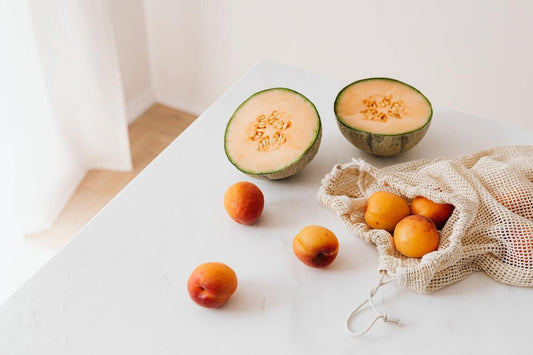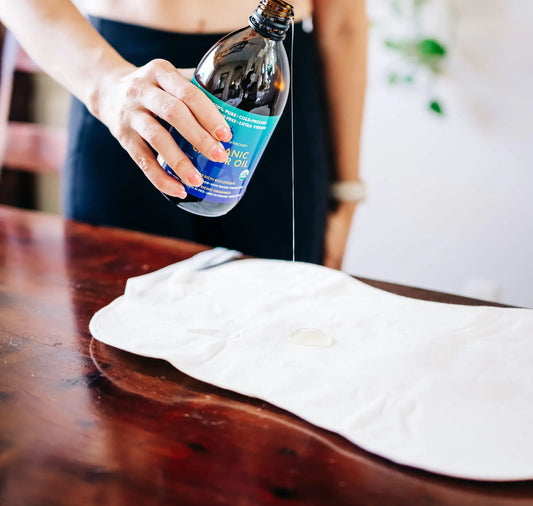
Your breasts may not be able to predict when it’s raining, but for some people the experience of tender, swollen, achy, sore breasts can most definitely help predict the arrival of one’s period…
If this sounds familiar it’s time to put your breast tenderness behind you!
Cyclical sore breasts will usually occur anywhere from right after ovulation to just before your period begins. But most women experience it between 7 and 14 days before their period starts.
This is another symptom of PMS that is accepted as "normal", causing women put up with it month after month!
But I’m here to tell you that – like all other symptoms of PMS – there is another way!
Breast pain has an underlying root cause and when you understand what that is you’re better equipped to know how to deal with it!
So, what’s causing your sore breasts?
Cyclical sore, swollen tender breasts are indicative of an underlying hormonal imbalance between estrogen and progesterone as these hormones stimulate breast tissue and can increase fluid & swelling causing tenderness.
Most commonly it's excess stimulation by estrogen that's the culprit- which is the same reason you may experience period pain, back pain & headaches around your period! You may have heard of this being called "estrogen dominance".
Estrogen dominance can be either where there is too much estrogen in relation to progesterone, or when you don't have enough progesterone!
If you're on hormonal birth control such as the pill, it's important to be aware that synthetic estrogen also stimulates breast tissue and can be a cause for breast pain.
When you're ovulating regularly and your hormones are balanced you won't experience symptoms such as breast tenderness! Yes - for real!
You can find out more out how to balance your hormones naturally for PMS-free periods here.
How to treat breast tenderness naturally?
Load up on the fibre
This is the first & most effective place to start.
To prevent estrogen dominance, we need to ensure we support the elimination of estrogen from the body!
We eliminate estrogen through our bowels and ideally, we’d want to have 1-2 bowel movements a day. Dietary fibre is what ‘adds bulk’ to our stools and inadequate fibre (under 25-30g for adults) is one of the leading causes of constipation.
The problem with constipation is that it causes estrogen to be recirculated back into the body, contributes to excess estrogen and hello breast tenderness (and other symptoms of PMS).
So, some easy ways to incorporate extra fibre into your diet include consuming more:
Cruciferous vegetables such as broccoli, cauliflower, brussel sprouts..
Seeds, such as those in Earth Seeds. Add 2 tablespoons to each meal daily for added fibre & anti-inflammatory Omega-3s which also help to reduce pain!
Whole grains such as rice, oats, buckwheat.
Fruit such as dark berries, pears, melon and oranges.
Vegetables such as broccoli, spinach, carrots and sweetcorn.
Experiment with going caffeine free
Now before you run a mile - I'm not saying you have to go completely caffeine free! However, studies have found an association between high caffeine intake and breast pain... plus if you're someone whose struggling to balance their hormones, in the short-term quitting the coffee may be a good idea for you.
A great place to start experimenting is with avoiding coffee in the week before & during your period. Make sure to take note if you experience any improvements or changes over at least 3 menstrual cycles.
There are so many delicious, energy boosting alternatives to coffee that don't impact your hormones and exacerbate PMS!
We created our Luna's Latte range to not only make switching up coffee easier for you.. but to support & nourish hormones too!
Luna’s Gold is a great option for tender breasts as it contains anti-inflammatory turmeric to help fight inflammation that drives pain and estrogen dominance.
Whilst Luna's Matcha gives you a sustained boost in energy, supports adrenals & skin health too!
Meet your iodine requirements
Iodine deficiency is the most common nutrient deficiency that causes breast pain. Iodine has two important functions in the maintenance of estrogen levels in the breasts. Firstly, iodine plays a role in down regulating our cell’s sensitivity to estrogen which in turn helps reduce breast enlargement and swelling. Secondly, it stimulates the genes responsible for estrogen detoxification and in turn supports the excretion of estrogen from the body helping to prevent excess.
There are two ways in which you can increase your intake of iodine that will help relieve tender breasts in a matter of weeks:
1. Food: The best food sources of iodine include seafood, raw dairy, strawberries, egg yolks and seaweeds such as kelp, wakame & kombu.
2. Supplementation: we always recommend seeing a practitioner for supplement recommendations to suit your individual requirements. When it comes to iodine usually molecular iodine is best (such as in the brand The Violet Daily) at a dose of 1000 to 3000 mcg. However please understand that if you have Hashimotos or are on thyroid medication you need to be very cautious about iodine as it can exacerbate your condition.
Consume flaxseeds!
Consuming 3 tablespoons of freshly ground flaxseeds daily has shown to be an effective dietary treatment for cyclical breast pain. Sprinkle them over salads, in smoothies or oats!
Flaxseeds contain high levels of omega-3 fatty acids which help the body to decrease inflammation and they contain lignans which help bind to and eliminate estrogen from the body.
They also are full of other nutrients like Vitamin B6 (excellent for PMS + depression!), Magnesium (goodbye cramps!), folate (hello fertility!) and others.
Consuming three and a half tablespoons of flaxseed per day reduces breast pain, swelling and lumpiness in three months (Phipps, Martini, Lampe, Slavin & Kurzer, 1993). If you don’t like flaxseeds try Earth Seeds.
Cut back on sodium
Fight fluid retention by reducing your intake of sodium and increasing your intake of potassium. Sodium-rich foods include processed foods, pickled vegetables, and cured meats. Potassium-rich foods include bananas, spinach, and beetroot.
Exercise regularly
Regular exercise helps to prevent symptoms of PMS such as breast tenderness! Prevention is key my friend! Skip, run, walk, swim, HIIT, dance, whatever your heart desires. Move your body for a minimum of 20 mins a day, and on the day where you have sore breasts or you're on your period opt for more restorative forms of movement like yoga, pilates or walking.
Additional Support
Whilst breast tenderness is a common PMS symptom, it can be treated with natural, effective solutions.
Always start with food, as food is the main foundation to building amazing hormones and healthy periods!
If you're unsure where to start when it comes to balancing your hormones naturally, check out our mini-course The Better Period Method to learn more about make simple changes in your diet & lifestyle for transformative results to your cycle.
For natural product support, ensuring you are supporting your hormones every day is key for symptom-free periods every month! If you don't have a daily Cycle-Care Routine you can get one here.
AUTHOR
Clinical Nutritionist Judy Cho,
References
Ader, D., South-Paul, J., Adera, T., & Deuster, P. (2001). Cyclical mastalgia: prevalence and associated health and behavioral factors. Journal Of Psychosomatic Obstetrics & Gynecology, 22(2), 71-76. doi: 10.3109/01674820109049956
Jin, M., Yoon, C., Ko, H., Kim, H., Kim, A., Moon, H., & Jung, S. (2016). The Relationship of Caffeine Intake with Depression, Anxiety, Stress, and Sleep in Korean Adolescents. Korean Journal Of Family Medicine, 37(2), 111. doi: 10.4082/kjfm.2016.37.2.111
McGhee, D., & Steele, J. (2010). Optimising breast support in female patients through correct bra fit. A cross-sectional study. Journal Of Science And Medicine In Sport, 13(6), 568-572. doi: 10.1016/j.jsams.2010.03.003
Meisel, L. (2016). Understanding the Science Behind Breast Pain During Your Cycle. Retrieved 29 July 2021, from https://www.avawomen.com/avaworld/sore-nipples/
Phipps, W., Martini, M., Lampe, J., Slavin, J., & Kurzer, M. (1993). Effect of flax seed ingestion on the menstrual cycle. The Journal Of Clinical Endocrinology & Metabolism, 77(5), 1215-1219. doi: 10.1210/jcem.77.5.8077314
Stoddard II, F., Brooks, A., Eskin, B., & Johannes, G. (2008). Iodine Alters Gene Expression in the MCF7 Breast Cancer Cell Line: Evidence for an Anti-Estrogen Effect of Iodine. International Journal Of Medical Sciences, 5(4), 189-196. doi: 10.7150/ijms.5.189
Wang, C., Luan, J., Cheng, H., Chen, L., Li, Z., Panayi, A., & Liu, C. (2018). Menstrual Cycle-Related Fluctuations in Breast Volume Measured Using Three-Dimensional Imaging: Implications for Volumetric Evaluation in Breast Augmentation. Aesthetic Plastic Surgery, 43(1), 1-6. doi: 10.1007/s00266-018-1243-6




